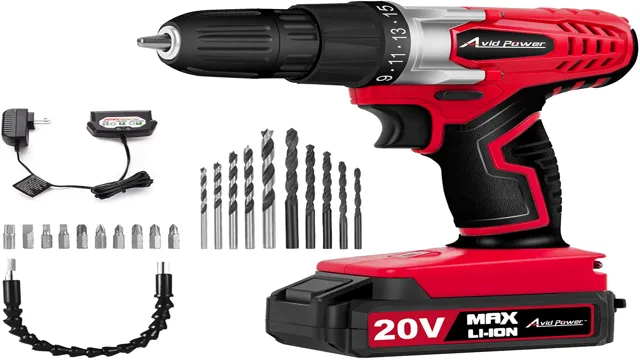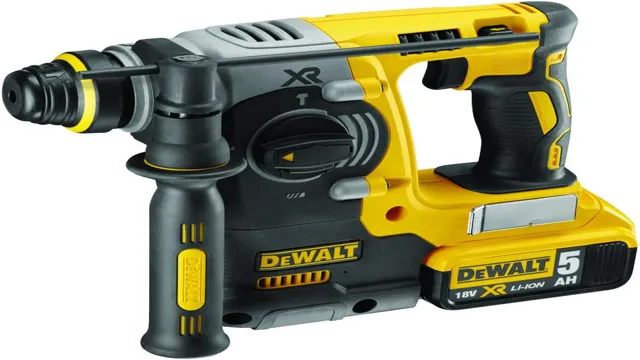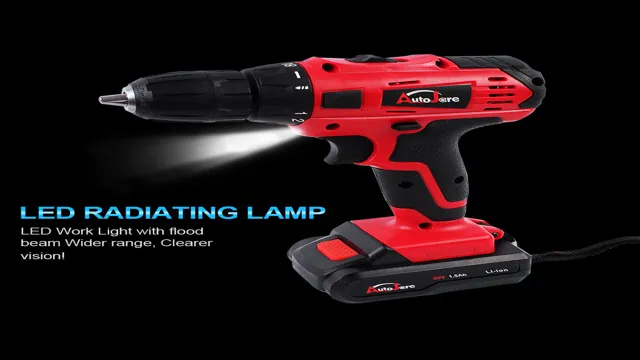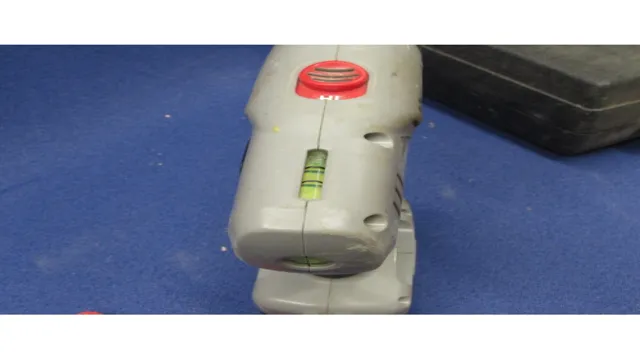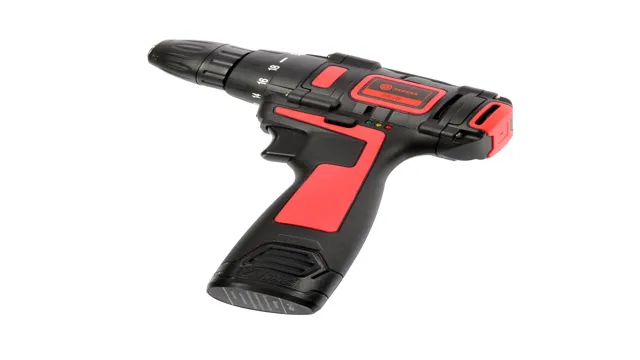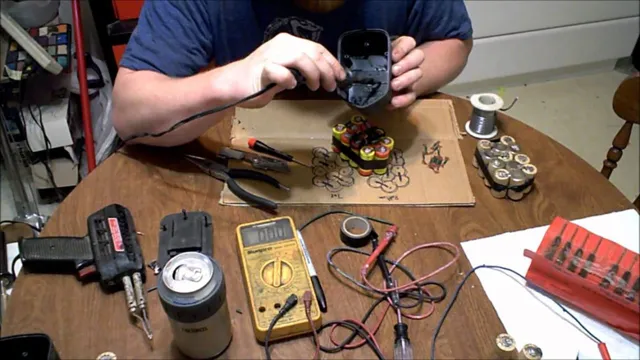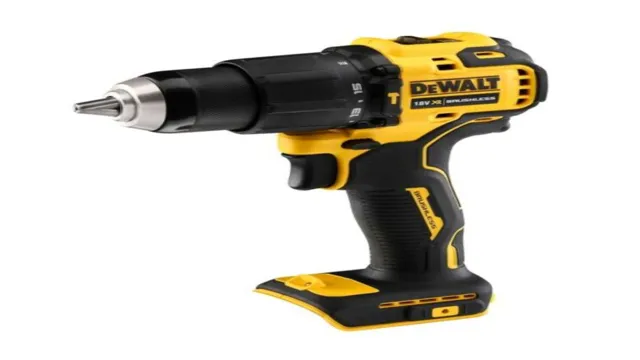How Cordless Drill Works: The Ultimate Guide to Understanding the Mechanisms
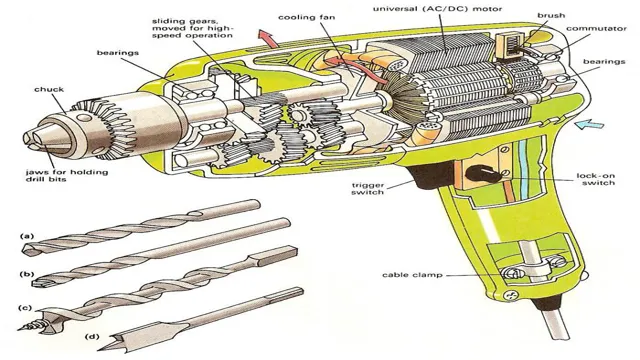
If you’ve ever used a cordless drill, you may have wondered how this handy tool manages to spin a drill bit without being plugged in or tethered to a power source. The answer lies in the drill’s battery-powered motor, which converts stored energy into mechanical motion. But that’s just the beginning of the story! In this blog post, we’ll dig deeper into the inner workings of a cordless drill, exploring the components and processes that make it possible for you to effortlessly drill holes and drive screws.
From the battery to the chuck to the clutch, we’ll examine each piece of this powerful machine and how they work together to deliver reliable performance. So if you’re curious about how a cordless drill works, grab a cup of coffee and settle in – we’ve got some fascinating insights to share!
Introduction
Have you ever wondered how cordless drills work? Cordless drills are a must-have tool for DIY enthusiasts and professionals alike. They provide portability and convenience compared to their corded counterpart. A cordless drill works by storing energy in a rechargeable battery pack that powers the motor.
The battery acts as the power source, delivering electricity to the drill’s motor, which rotates the chuck. The chuck holds the drill bit, allowing it to turn and bore holes into various materials, such as wood, metal, and even concrete. Cordless drills come in different sizes, from small 12-volt models to powerful 20-volt models and above.
The battery’s voltage determines the drill’s power, which affects its maximum torque, speed, and run time. A higher voltage battery provides more power and longer run time, making it ideal for heavy-duty tasks. Understanding how cordless drills work can help you choose the right tool for your project and ensure safe and efficient use.
What is a Cordless Drill?
A cordless drill is a power tool that is designed to be used without the need for a power cord. It works by using rechargeable batteries to power the drill, making it much more mobile than a traditional corded drill. Cordless drills come in all shapes and sizes, and are used for a wide range of applications, from simple DIY projects to construction work.
They are incredibly versatile tools that can be used for drilling holes, driving screws, and even mixing paint and other liquids. Overall, a cordless drill is an essential tool for anyone who needs to tackle projects around the home or on a job site, offering flexibility and ease of use for users of all skill levels.
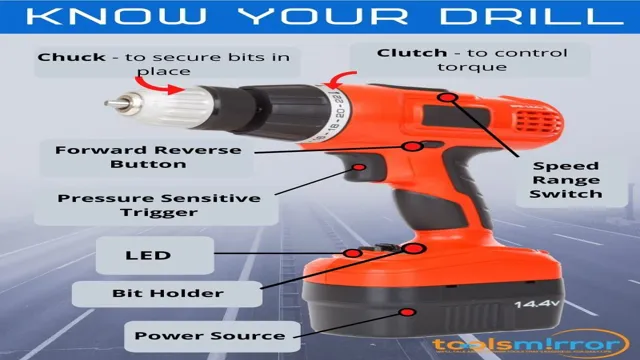
Types of Cordless Drills
Cordless drills are essential tools for both DIYers and professionals. They offer convenience, flexibility, and portability; you can use them anywhere without worrying about power cords or outlets. However, with so many brands and models available in the market, choosing the right cordless drill can be overwhelming.
The type of cordless drill you choose will determine its performance, versatility, and suitability for your project. Generally, there are three types of cordless drills you can choose from: drill drivers, hammer drills, and impact drivers. Each type has its unique features, benefits, and limitations, making selecting the right one for your needs crucial.
In this article, we will explore the different types of cordless drills in detail, helping you make an informed decision when purchasing your next cordless drill.
Parts of a Cordless Drill
Cordless drills have become a necessity for DIY enthusiasts and professionals alike, owing to their convenience and portability. These devices consist of several key components that work together to deliver maximum power and drilling precision. At the heart of any cordless drill is the motor, which converts electrical energy into rotational energy, driving the chuck that holds the drill bit in place.
The battery pack supplies the motor with the necessary power to operate, and the gear train connects the motor to the chuck. Another essential component is the clutch, which controls the amount of torque transferred to the chuck and prevents the drill from overdriving screws and damaging the workpiece. Finally, the chuck itself – typically made of metal – tightens and releases the drill bits, making it easy to swap out bits for different drilling needs.
Understanding the anatomy of a cordless drill is crucial to choosing the right device and using it effectively for various drilling and driving applications.
The Mechanism behind Cordless Drills
Cordless drills have become one of the essential tools for DIY projects to construction sites. The mechanism behind cordless drills is quite simple. It consists of an electric motor that is powered by a rechargeable battery.
The trigger on the drill controls the motor which then rotates the drill bit. The battery power is transmitted to the motor through a switch that is connected to the trigger. Once the trigger is pulled, it activates the switch, and the power from the battery is sent to the motor which then rotates the chuck.
You May Also Love:
The chuck is a cylindrical piece that holds the drill bit in place. The motion from the motor is transmitted to the chuck, which in turn rotates the drill bit. This rotational motion allows the drill to drill holes or drive screws into various materials like metal, plastic, and wood.
The strength and torque of the drill depend on the battery’s voltage and the motor’s power. Higher voltage and more powerful motors allow the drill to drill bigger holes and drive screws more efficiently. Overall, cordless drills are an excellent tool for a wide range of applications that require drilling or driving tasks.
Battery Operation
Cordless drills have been a game-changer in the world of DIY projects, and their mechanism is quite fascinating. A cordless drill is powered by a rechargeable battery, which provides the necessary energy to rotate the drill bit. The most common type of battery used in cordless drills is lithium-ion, which is lightweight, has a long life span, and provides consistent power output.
The battery is housed in the handle of the drill and is easily removable for recharging or replacement. When the trigger is pressed, an electrical current flows from the battery to the motor, which then rotates the chuck and the drill bit. The speed of the drill is controlled by the pressure applied to the trigger.
Cordless drills have revolutionized the DIY industry and made it possible to tackle projects without being tethered to an outlet.
Motor Functionality
Cordless drills are an essential tool for both professionals and DIY enthusiasts. They allow for greater flexibility and mobility, making them an excellent choice for any job site or home project. But have you ever wondered about the mechanism behind cordless drills? At the core, cordless drills use a rechargeable battery to power their motor.
The motor then turns a chuck, which holds the drill bit in place and rotates it at high speeds to bore holes through wood, metal, and other materials. The power of the motor is determined by the voltage of the battery, with larger batteries providing more power and longer run times. Additionally, advancements in motor technology have led to brushless motors being used in many cordless drills, as they are more efficient and reliable than traditional brushed motors.
Understanding the mechanism behind cordless drills can help you choose the best tool for your specific needs, whether it’s for occasional use at home or daily use on a job site.
Chuck and Clutch System
The chuck and clutch system plays a crucial role in the functioning of cordless drills. The chuck is the cylindrical clamp that holds the drill bit in place, allowing it to rotate freely and drill into various surfaces. The clutch, on the other hand, is responsible for regulating the torque or twisting force applied to the drill bit.
By adjusting the clutch, you can control the amount of force applied to prevent the bit from slipping or overtightening the screw. This feature is particularly handy when working on delicate materials like wood or drywall, where precise drilling is necessary. The chuck and clutch system work together to ensure smooth and efficient drilling, making cordless drills versatile and easy-to-use tools.
Whether you’re a professional or a DIY enthusiast, cordless drills equipped with a reliable chuck and clutch system will undoubtedly make your work easier and more precise.
Tips for Maintaining Cordless Drills
Cordless drills are incredibly convenient for DIY enthusiasts and professionals alike because they offer the freedom to move around without being tethered to an outlet. But how cordless drill works? Inside the tool, you’ll find the battery pack, motor, and gear assembly all working together. The battery pack provides power to the motor, which turns the transmission shaft.
The transmission shaft then transfers torque to the chuck assembly, which holds the drill bit. To keep your cordless drill working at its best, it’s essential to maintain it properly. One of the most crucial maintenance tasks is to keep the battery charged and stored correctly.
You should also clean your drill regularly, especially after use, to prevent debris buildup and ensure smooth operation. Another tip is to inspect the chuck and tighten any loose bits or parts regularly. With proper care, your cordless drill can be a reliable and indispensable tool for years to come.
Cleaning and Lubrication
Keeping your cordless drill in good condition is essential to ensuring that it performs to its full potential for years to come. One of the best ways to maintain your drill is through regular cleaning and lubrication. A simple way to clean your drill is to use a soft cloth to wipe away any dirt or debris from the surface.
You can also use compressed air to blow away debris from the vents and other hard-to-reach areas. When it comes to lubrication, be sure to use the right type of oil or grease for your drill. Applying a small amount of lubricant to the chuck, the motor, and the other moving parts can help them operate smoothly and prolong their lifespan.
Just be sure not to over-lubricate, as this can create a mess and attract more debris. By taking the time to clean and lubricate your cordless drill, you can keep it working its best and avoid costly repairs down the road.
Proper Charging
Proper Charging Maintaining cordless drills is essential to ensure they remain in good condition and function properly. One crucial aspect of maintenance is proper charging. It’s essential to follow the manufacturer’s recommendations when it comes to charging your cordless drill’s batteries.
Overcharging or undercharging can lead to reduced battery life, decreased performance, and may even damage the battery. It’s important to take note of the battery’s charge level and only recharge it when necessary. Overcharging can cause the battery to overheat, which can be dangerous.
Similarly, undercharging can lead to sulfation, which can make the battery less effective. It’s also important to use the right charger that’s designed for the battery of your cordless drill. Traditional chargers may not work correctly and may lead to damage.
By following these tips, you can ensure that your cordless drill remains in great condition and provides you with the performance you require.
Conclusion
In conclusion, the cordless drill is a marvel of modern engineering, combining the power of electricity with the convenience of portability. By harnessing the energy stored in its rechargeable battery, the drill can power its spinning drill bit, allowing it to create holes or drive screws with ease and precision. Essentially, it’s like having a miniature, hand-held power plant at your disposal.
So next time you’re using your cordless drill, take a moment to appreciate the cleverness and ingenuity that went into its creation. It’s a true testament to the power of human innovation!
FAQs
What is a cordless drill and how does it differ from a traditional drill?
A cordless drill is a power tool that runs on a rechargeable battery, while a traditional drill is powered by electricity. Cordless drills offer greater mobility and convenience.
How long does a cordless drill battery last?
The battery life of a cordless drill varies depending on the model and usage, but typically ranges from 30 minutes to 2 hours.
How do you charge a cordless drill battery?
Cordless drill batteries can be charged by plugging the charger into a power outlet and connecting the battery to the charger. It’s important to follow the manufacturer’s instructions for charging to avoid damaging the battery.
What types of materials can a cordless drill be used on?
Cordless drills can be used on a wide range of materials, including wood, metal, plastic, and concrete. The type of drill bit and drilling speed will vary depending on the material.
Can a cordless drill be used as a screwdriver?
Yes, many cordless drills come with a function to switch between drilling and screwdriving. This allows the tool to be used for both drilling holes and driving screws.
How does a cordless drill control its speed?
Most cordless drills have a variable speed control that allows the user to adjust the speed based on the task at hand. The speed is typically controlled by a trigger on the drill.
How do you maintain a cordless drill?
To maintain a cordless drill, it’s important to keep it clean and free from debris. You should also regularly check the battery and charger for any damage or defects. Additionally, it’s a good idea to lubricate the tool periodically to ensure smooth operation.

